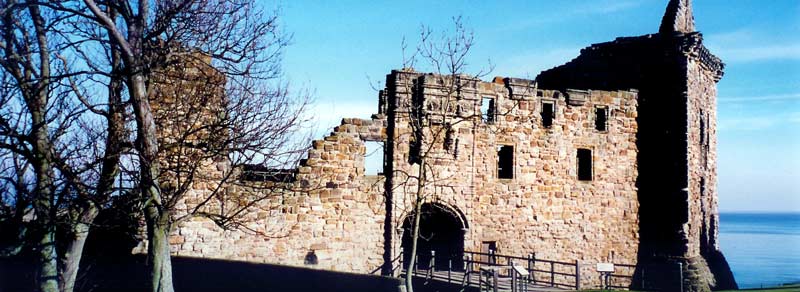 |
|
| The site on which St Andrews Castle stands has been fortified since the 1100's and was adopted as the chief residence of the bishops and archbishops of St Andrews by 1200, becoming the principal administrative centre of the Scottish Church. The original castle however was badly damaged during the Wars of Independence, and rendered indefensible by the Scots in 1337 to avoid it again being held by the English. Completed in about 1400, the "new" castle was the work of Bishop Trail. With steep cliffs protecting it to the north and east, thick curtain walls and rock cut ditches on its landward side it was built to be easily defended. Within these walls were five square towers providing residence for the bishop, his large household and guests. Ranges were built along the inside of each length of curtain wall and further accommodation was provided in outer courtyards to the south and west.
Click here to see a reconstruction of the castle. |
|
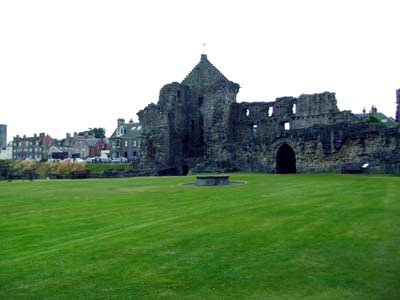 |
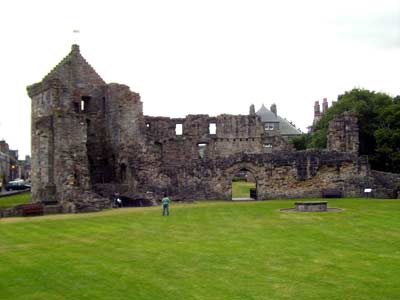 |
| Following the Battle of Flodden, significant work was undertaken by Archbishop James Beaton in the early 1500's, with the addition of two massive circular gun towers called "blockhouses". Beaton appointed as his successor his nephew David, who soon became unpopular by having the Protestant preacher George Wishart, burnt at the stake in front of the castle walls. Cardinal Beaton was subsequently murdered by local landowners, who besieged the castle and hung Beaton's naked body over the castle ramparts, before preserving it in a chest of salt in the Bottle Dungeon! | |
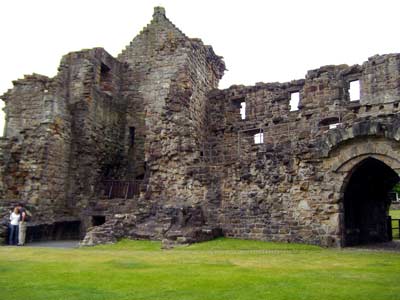 |
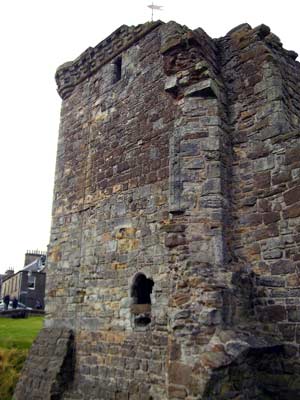 |
| The Sea Tower at the north-west angle contained the notorious "Bottle Dungeon" in its basement, so called because it has a narrow entrance neck at the top and a broader chamber below; particularly hopeless prisoners might have been held within this dark, airless pit cut out of the rock. The vaulted ground floor chamber was probably also a prison, as an angled hole has been cut through the wall next to the door - presumbably for the delivery of food. It is a possibility that George Wishart was held in this chamber before his execution for hersesy in 1546. Despite this, the upper floors contained at least one comfortable chamber for favoured members of the bishop's household or for important guests; this room contained a fireplace, a latrine suspended out over the sea, a stair to the upper floor, and probably a fine view. | |
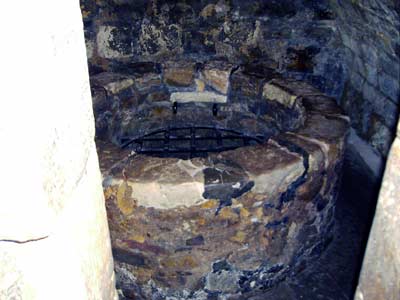 |
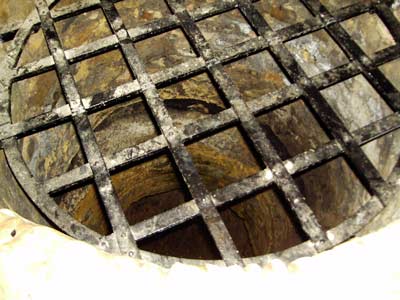 |
| Following the Battle of Flodden, significant work was undertaken by Archbishop James Beaton in the early 1500's, with the addition of two massive circular gun towers called "blockhouses". Beaton appointed as his successor his nephew David, who soon became unpopular by having the Protestant preacher George Wishart, burnt at the stake in front of the castle walls. Cardinal Beaton was subsequently murdered by local landowners, who besieged the castle and hung Beaton's naked body over the castle ramparts, before preserving it in a salt barrel!
Click HERE to find out what happened next... |
|